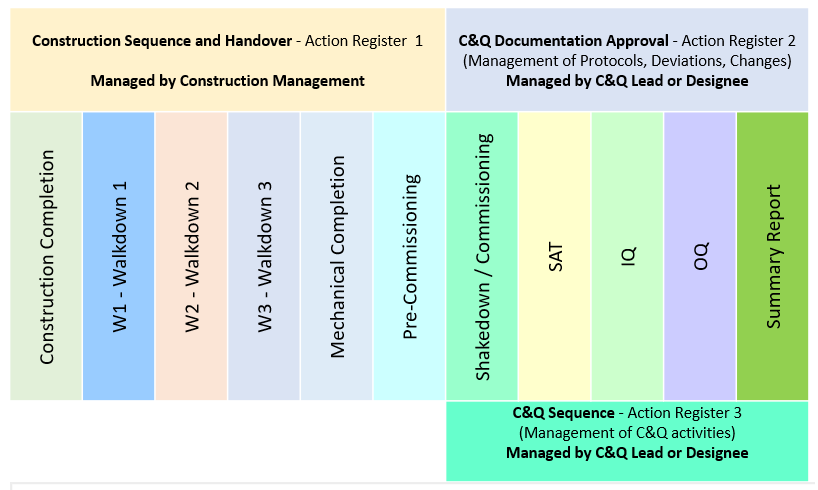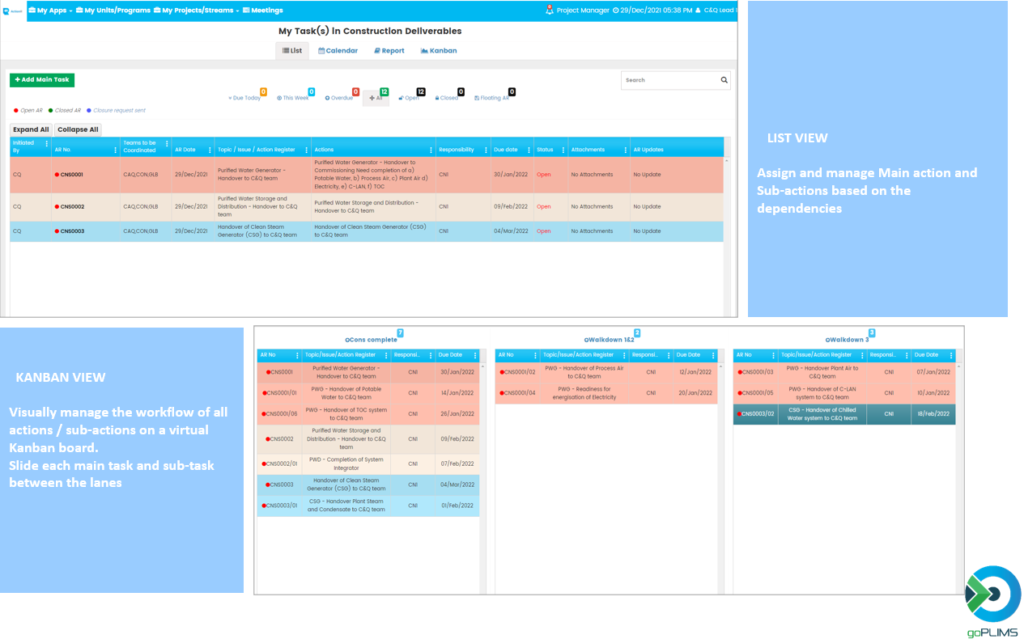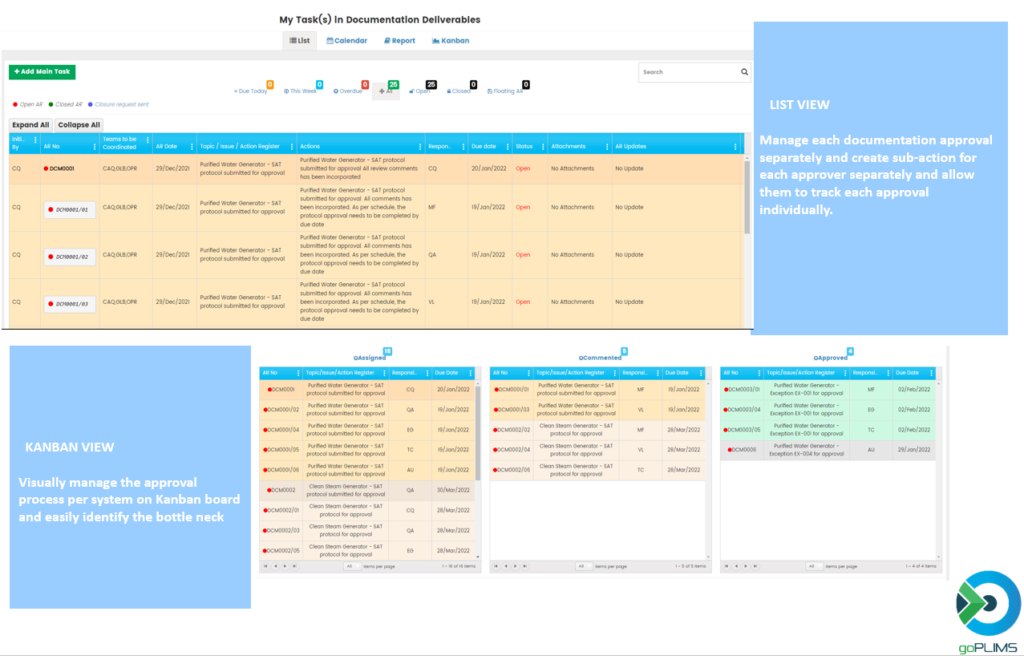Managing C&Q Projects with ActionR
Overview
Commissioning and Qualification(C&Q) projects are, by their nature, complex with a large number of dependencies and overlapping responsibilities and timelines. Effective management of these projects is often difficult due the need for consistent, high-quality communication between the project coordinator and all of the involved system owners.
As such, coordinators on C&Q projects often find themselves spending most of their days in either formal meetings, in one-on-ones, or otherwise chasing down project team members to verify that tasks are on track and that documentation is being prepared and handled correctly. This constant need for check-ins unfortunately reduces the amount of time system owners and engineers have to actually complete their tasks, which can lead to a vicious cycle where meetings about what is being done consume more man-hours than the actual doing of the tasks themselves.
Digital tools such as ActionR give us new ways to communicate clearly and can significantly reduce the amount of time project coordinators, system owners, and engineers need to spend on seeking or giving updates. In this case study we will show one method of structuring a C&Q project using ActionR and demonstrate how it can reduce the amount of non-productive hours in the project.
Management of Deliverables Using 3 ActionR Streams
C&Q activities do not occur in a vacuum, but take place after the construction phase of a larger set of projects.
As such there are three major parts to a C&Q project:
- Managing the handover from the Construction Team
- Preparing and approving all of the C&Q Documentation
- Performing the C&Q activities themselves (Shakedown, SAT, IQ, OQ, etc.)
Managing Construction Handover
Managing C&Q Documentation
Managing C&Q Activities
Conclusion
Using ActionR across these three areas of C&Q helps to significantly improve communication on the project team and as such, reduce non-productive time spent chasing status updates and documentation approvals. Team members focused on project execution can quickly and easily put a permanent record of their current status up on the system, significantly reducing time lost due to miscommunication or other team members being unclear about the live status of actions and tasks.
With good implementation of these methods and strong buy-in from the team members in the use of ActionR; you can see returns of up to:
- A 50% reduction in man-hours spent on coordination meetings, especially ad-hoc one-on-ones,
- A 40% reduction in time spent providing status updates, mostly by eliminating the need to provide updates across multiple platforms,
- Significantly faster identification of bottlenecks thanks to better status visualisation with Kanban, and
- Much less time spent collating KPI data and generating reports, as everything you need is right there in the ActionR system and exportable at the click of a button.






